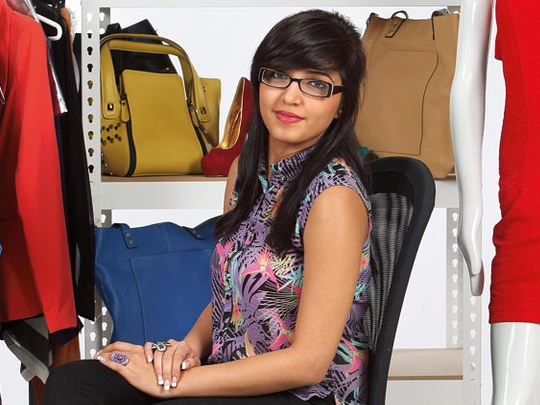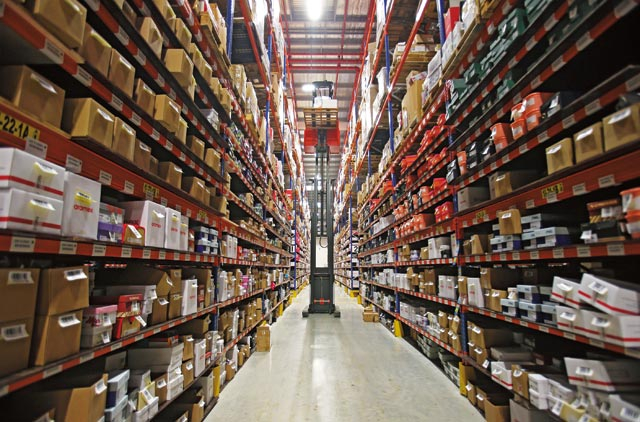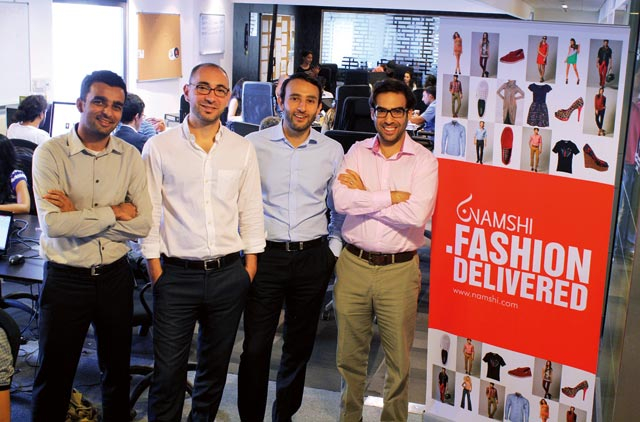
Browsing the shops has taken on a whole new meaning thanks to technology – what used to be window shopping at the mall now begins at home with your internet browser.
Just a few years ago people were still wary of the click-to-buy process, but today the ease of simply clicking a mouse to have an item delivered to your door is now the normal way of shopping for millions of people around the globe. Internet retail sales are forecast to reach $327 billion by 2016 in the US, according to market research firm Forrester, while people in the UK spent £68.2 billion on the internet in 2011, an increase of almost £10 billion
on the year before.
While the UAE is still in the early stages of growth by comparison, those of us making use of internet shopping rose in the region from 23 per cent in 2005 to 73 per cent in 2010 according to Euromonitor, and the market is forecast to grow to $2.09 billion by 2016.
Online shops run by trendy young professionals like Dubai-based Namshi.com are paving the way. Co-founded in 2011 by Faraz Khalid, Mohammad Mekki, Louis Lebbos and Hosam Arab, this one-stop e-shop boasts a wide selection of merchandise for men, women and children and has partnered with Aramex to offer free delivery on goods across the GCC.
So why has online shopping taken off here in such a big way? It’s a no-brainer for most consumers says Wael Al Fatayri, buyer at Namshi. “It saves a lot of time – there’s huge variety and many different categories available in one spot so consumers can visit several brands just with the click of a mouse, while getting detailed information about fabrics and designers at the same time.”
Flexible payment options have made shopping on the net an even more attractive prospect, he continues. “Retailers like us don’t charge for shipment, and consumers can pay online or pay cash upon delivery if they prefer – which many do.”
Although in the past people may have been dubious about the quality of the goods they are buying online, Namshi and many other retailers have worked hard to dispel this fear. “We have a 14-day return policy,” says Namshi senior buyer, Ketki Chandavarkar.
“If a consumer is not satisfied with the product they can exchange it provided it still has a tag and the product is still intact. We also check products before they leave the warehouse. The statistics on returns in terms of ecommerce are way below average.”
But with such a fast-moving market, Namshi and its competitiors have to work hard to stay on top of what’s hot. “We monitor various platforms like WGSN, an online fashion forecasting tool that identifies and analyses key forthcoming trends,” says Georgina Hills, buying manager for Namshi Apparel division.
“We also look at what celebrities are wearing; they are influential because people want to look like them.”
How people dress on the street is another inspiration, says Wael. “Trends are determined by what’s selling on the high street; customer demand determines what becomes more fashionable. Catwalk trends are also important as they influence people’s wardrobes, so we visit various fashion shows and look at magazines’ fashion pages and other features.”
Perhaps surprisingly, premium luxury brands do very well online, says Ketki. “Alexander McQueen, Tom Ford and Karl Lagerfeld are very popular and in footwear Jeffrey Campbell is doing well.” While dresses, handbags and sandals are top performers, T-shirts, particularly polo shirts from the brand Fifteen Minutes, are doing very well, says Georgina. International and local brands have great exposure on the net, which they might not otherwise find in-store. “Finders Keepers, a hip Australian brand, is fast gaining popularity in the region,” says Wael. “Local designers like Julea Domani and Aanchal Chanda, a jewellery brand are also a huge draw.”
Although the company is young both in terms of its age and the age of its staff, the team is looking to expand beyond the UAE and Saudia Arabia to penetrate other markets. “We want to be the biggest online destination in the region,” says Georgina.
One thing’s for sure – with the ever-increasing speed and capacity of e-tailers and growing desire for convenience in consumers, the online retail market in the region is set to grow and grow.
The story behind your online shop
When you log on for your fashion fix online, months of work has already gone into researching and sourcing the latest trends by the buying teams at internet retailers like Namshi.
Once the products have been sourced and received at the office, every single item has to be styled and photographed on a mannequin by the production team. At Namshi this consists of stylists like Shloka Hiranandani. “If I want to sell a dress I pair it with shoes that don’t overpower it but still look good, like a pair of understated black heels,” she says. “If I wanted to sell the shoes themselves I’d team them with a one-toned dress so that the focus goes to the shoes.”
Next, the content writing team give descriptions of the products. “We write a lot about the style, material, laundering instructions, and the brand, then upload the material on the web,” says Nabeela Ali, content writer.
When the material is uploaded people can order the items online, as demonstrated by Namal Siddiqui, PR executive and blogger for Namshi (pictured above left).
Then the item goes into storage, ready for it to be ordered. “We have about 100,000 pieces in stock,” says Satish Thayyur, operations director. “We get around 300-350 orders a day and dispatch orders 24/7 through our partner Aramex every day except Friday.”














